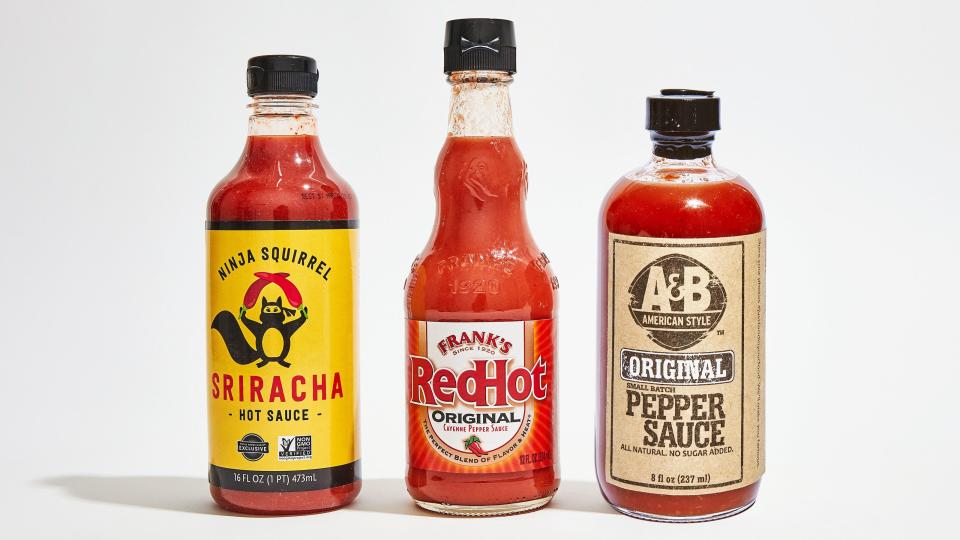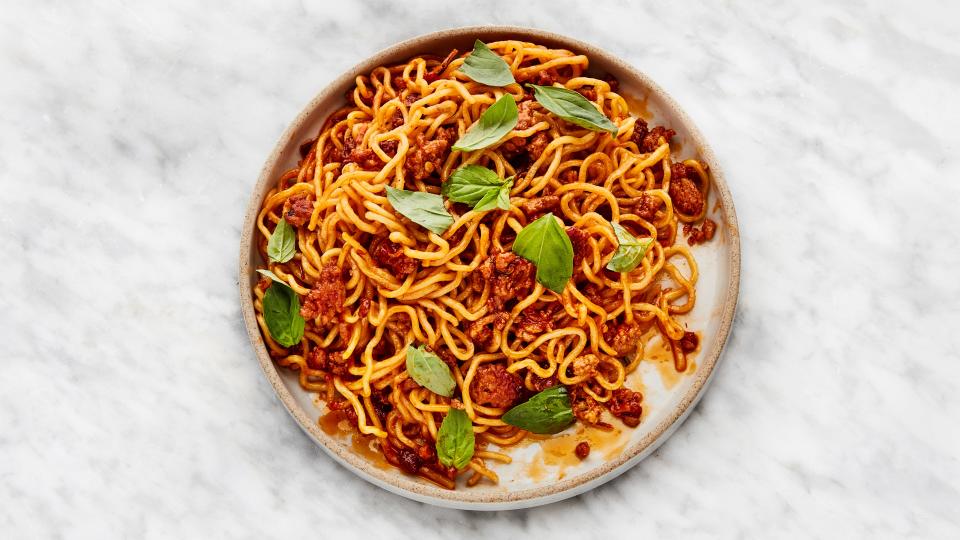How to Choose the Right Hot Sauce for the Job
We have hot sauce YouTube shows. Hot sauce internet challenges. Hot sauce t-shirts. Hot sauce conventions. Hot sauce subscription services. Hot sauce shops. And hot sauce sommeliers. Hot sauce culture is alive and well in the world. But in all this hot sauce hysteria and with all these hot sauce varieties, we shan't ignore one glaring fact: Not all hot sauce is the same.
And that becomes especially important when it comes to cooking food at home with hot sauce. Or topping the food you just spent your valuable time making with some liquid heat. You need to know what kind of hot sauce is going to make your food taste the best it possibly can. Grab a glass of water, because we’ve got the hot sauce answers for you right here:

Crystal, Texas Pete’s, Frank’s RedHot, and Tabasco
All of these hot sauces contain more vinegar than they do water, which means they taste just as acidic as they do spicy. Vinegar-based hot sauces are tangy in the clean, sharp way you’d expect from something made with a base of white vinegar (at least usually). These hot sauces are bright in flavor and they have an approachable spice level and clean pepper flavor.
When it comes to using hot sauces like Crystal or Tabasco, you have to take the high acid level into account. They’re great for delivering flavor and acid in marinades, sauces, and dips, as well as adding a little flare to a slice of pizza, among other low-acid or high-fat foods. And if you’re making Buffalo wings, you’ll need to use one of these vinegary hot sauces to get that spicy, tangy, buttery sauce tasting right.

But if what you’re adding hot sauce to already has a bit of acid in it, you might want to consider using a hot sauce in the next category. That brings us to...
Tapatio, Cholula, and Valentina
These are all Mexican hot sauces, and while the country of origin doesn’t hold any real restriction over the contents of a hot sauce, you’ll find that these hot sauces all contain more water than they do vinegar. That means that the emphasis is on the chile, not the acid. Generally thicker-bodied, they have the same clean, approachable chile flavor of vinegar-based sauces but without the tang.
We like to use these chile-forward hot sauces on dishes that already contain some sort of acidic component or don’t need any acid at all. Tacos with a squeeze of lime don’t need more acid, and soft-scrambled, buttery scrambled eggs don’t really want any acid to disrupt the pillowy creaminess. A hot sauce like Cholula works perfectly for both.

Sriracha, Sambal, and the Funky Bunch
There are more flavors than just spicy or acidic to talk about in hot sauce, and those flavors become especially important (and interesting) when there are additional ingredients or factors—like fermentation!—in the mix.
For hot sauces and pastes like sriracha and some varieties of sambal oelek, a handful of additional ingredients like lime juice, garlic, and sugar add more flavor. Sriracha and sambal are great to use in marinades, braises, and sauces, since they bring a more complex profile. But they can still be used as condiments too (you've seen sriracha drizzles all over the internet, right?).
And then there are fermented hot sauces. Yes, they’re good for gut health, but fermented hot sauces are also funkier and more umami-loaded than their non-fermented counterparts. The fermentation process (what happens when the peppers are mixed with some kind of sugary substance and left to sit out, giving yeast and bacteria in the air a chance to process the sugar) mellows the spice of the peppers and creates a tang. Most fermented hot sauces often contain additional ingredients.

The XXX, Near-Death, Violent Sauce
When we talk about adding hot sauce to your food, this isn’t what we’re talking about. If there’s some kind of note on the bottle that makes it seem like the people who made the hot sauce were intending to hurt you, it probably won’t add much to the experience of enjoying your food. That’s not to say you can’t touch the stuff. If you’re the type of person who likes to impress friends with feats of bodily destruction, by all means, go for it. But we prefer to eat with our taste buds intact.
And now for some Buffalo wings:
Basically Buffalo Wings
Originally Appeared on Bon Appétit


